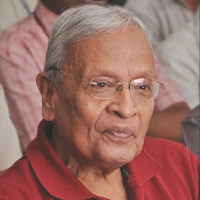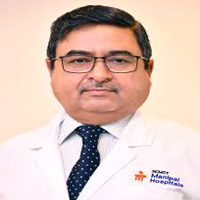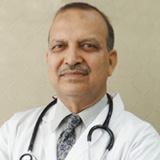Spine Surgery IN INDIA
The spine is a critical part of the human body, supporting movement, posture, and overall mobility. Over time, or due to specific conditions, the spine may develop issues that require medical intervention. Spine surgery offers a solution for a range of spinal disorders, from degenerative diseases to injuries and tumors.
India has emerged as a global leader in providing high-quality, affordable spine surgery, backed by world-class hospitals, skilled surgeons, and advanced technologies like minimally invasive and robotic-assisted techniques. This article offers a detailed overview of spine surgery, its types, procedures, and why India is a preferred destination for such treatments.
Introduction
Spine surgery is a medical procedure aimed at treating disorders or conditions related to the spine, such as spinal deformities, tumors, herniated discs, and injuries. This complex surgery can involve the removal of damaged tissue, the repair of vertebrae, or the stabilization of the spine to prevent further damage. In India, spine surgery has become a leading specialty due to advancements in medical technology, skilled surgeons, and affordable treatment options, making it an increasingly popular destination for medical tourists seeking spine care.
Why Do Spine Problems Occur?
Spine problems can arise from various factors, often involving both degenerative and traumatic conditions:
- Degenerative Disc Disease: Age-related changes in the spine, such as wear and tear of the discs.
- Herniated Disc: A disc that bulges or breaks open, putting pressure on the nerves.
- Spinal Stenosis: Narrowing of the spinal canal that compresses the nerves.
- Spinal Deformities: Conditions like scoliosis or kyphosis that lead to abnormal spine curvature.
- Infections or Tumors: Infections or growth of tumors within or around the spinal cord.
- Trauma: Injuries caused by accidents or falls can lead to fractures or dislocations of the vertebrae.
Types of Spine Surgery
There are several types of spine surgeries performed in India, depending on the condition being treated. Some of the most common procedures include:
- Discectomy: Removal of part of a herniated disc to relieve pressure on the nerves.
- Laminectomy: Removal of a portion of the vertebrae (the lamina) to relieve pressure on the spinal cord or nerves.
- Spinal Fusion: Joining two or more vertebrae together to eliminate movement between them, often performed after a disc removal or injury.
- Vertebroplasty and Kyphoplasty: Minimally invasive procedures used to treat compression fractures in the spine, often caused by osteoporosis.
- Spinal Deformity Surgery: Correcting abnormalities such as scoliosis or kyphosis.
- Spinal Tumor Removal: Surgery to remove tumors from the spine that may be benign or malignant.
- Spinal Stabilization Surgery: Involves inserting hardware like screws, rods, and plates to stabilize the spine after injury or surgery.
How is Spine Surgery Performed?
Spine surgery procedures can vary in complexity. Depending on the condition, the surgery may be performed through traditional open surgery, minimally invasive techniques, or robotic-assisted surgery.
- Traditional Open Surgery: Involves making larger incisions to access the spine. This technique is commonly used in complex cases where a larger area of the spine needs to be treated.
- Minimally Invasive Spine Surgery (MISS): Involves smaller incisions and the use of specialized tools to access the spine. This results in less muscle disruption, quicker recovery times, and smaller scars.
Robotic-Assisted Spine Surgery: This innovative technique uses robotic systems to assist surgeons in performing highly precise and complex surgeries. The robots provide greater accuracy, better visualization, and less disruption to surrounding tissues.
Pre-Procedure Care for Spine Surgery
Before undergoing spine surgery, there are several essential steps and preparations that patients need to follow to ensure a smooth and successful surgery. These preparations vary depending on the type of surgery but generally include:
- Consultation with the Surgeon
- A detailed consultation with the spine surgeon is crucial to understand the nature of the surgery, potential risks, expected outcomes, and the recovery process.
- The surgeon will review medical history, conduct a physical examination, and may order additional tests such as MRI, CT scans, or X-rays to determine the exact cause of the spine condition.
- Medical Evaluation
- Patients may undergo a thorough medical evaluation, which includes blood tests, electrocardiograms (ECG), and other tests to assess their overall health.
- If the patient has any underlying medical conditions, such as heart disease or diabetes, the doctor will manage them appropriately to minimize risks during the surgery.
- Pre-Surgery Instructions
- The surgeon will provide specific pre-surgery instructions, such as fasting for a certain number of hours before the procedure (usually 6–8 hours) to reduce the risk of complications during anesthesia.
- If the patient is on any medications, the doctor will guide them on which medications to stop or continue before surgery, especially anticoagulants or blood thinners.
- Anesthesia Consultation
- Depending on the type of surgery, the patient will need to meet with an anesthesiologist, who will assess their suitability for general or regional anesthesia.
- The anesthesiologist will explain the type of anesthesia used and answer any questions the patient may have about the anesthesia process.
- Physical Preparation
- Patients may be advised to stop smoking and reduce alcohol intake before the surgery, as both can interfere with healing and increase the risk of complications.
- Certain exercises may be recommended to improve physical fitness, particularly if the surgery involves spinal fusion or other complex procedures that require post-operative rehabilitation.
- Mental Preparation
- Surgery can be stressful, so it’s important for the patient to mentally prepare by discussing their concerns with the healthcare team.
- Some hospitals offer pre-surgery counseling to help patients manage anxiety and better understand the surgical procedure.
- Hospital Admission
- On the day of the surgery, patients will be admitted to the hospital where they will be prepared for the procedure. This includes changing into a hospital gown and receiving an intravenous (IV) line for medication and fluids.
Post-Procedure Care for Spine Surgery
After spine surgery, the recovery process is a crucial phase in ensuring that the surgery’s benefits are fully realized. The post-operative care varies depending on the type of surgery performed, but the general steps include:
- Immediate Recovery
- Post-Anesthesia Care: After surgery, patients are moved to a recovery room where they are closely monitored until the effects of anesthesia wear off.
- Pain Management: Pain management is an important aspect of post-operative care. The healthcare team will monitor and manage pain through medications, such as opioids, nonsteroidal anti-inflammatory drugs (NSAIDs), or regional anesthesia techniques like epidural blocks.
- Monitoring Vital Signs: Blood pressure, heart rate, and oxygen levels are continuously monitored to ensure that there are no complications after the surgery.
- Hospital Stay
- The length of the hospital stay varies depending on the complexity of the surgery and the patient’s overall health. For minimally invasive spine surgery, the stay may be as short as one or two days. More complex surgeries, such as spinal fusion or tumor removal, may require a hospital stay of several days to a week.
- During this time, the healthcare team will ensure that the patient is comfortable and that their recovery progresses smoothly.
- Physical Therapy and Rehabilitation
- Physical therapy often begins soon after surgery to help restore mobility, strength, and function. Rehabilitation can include simple movements to prevent stiffness and exercises to strengthen the muscles supporting the spine.
- For more extensive surgeries, such as spinal fusion or deformity correction, physical therapy may be more intensive and last for several months.
- Patients are taught how to move properly to avoid straining the spine and are advised on activities to avoid during the initial recovery period.
- Post-Surgery Follow-up
- Regular follow-up visits with the surgeon are scheduled to monitor the healing process. The doctor will check the surgical site for signs of infection, assess the healing of bones or tissues, and ensure that there is no recurrence of the condition.
- X-rays or other imaging may be conducted to assess the progress of bone healing or the positioning of implants, such as screws, rods, or plates, used during surgery.
- Dietary Recommendations
- A healthy diet rich in nutrients is essential for healing. After surgery, the patient will be encouraged to eat a balanced diet with sufficient protein, vitamins, and minerals to support tissue recovery and bone health.
- In some cases, patients may need to take supplements like calcium and vitamin D to aid bone healing, particularly after spinal fusion.
- Pain Management and Medication
- As the patient begins the healing process, the healthcare team will gradually reduce the intensity of pain medications. They will transition the patient to less potent pain relievers, such as acetaminophen or NSAIDs, as healing progresses.
- In some cases, patients may be prescribed muscle relaxants or nerve pain medication, depending on the extent of the surgery and any nerve-related symptoms.
- Lifestyle Adjustments and Home Care
- Patients may need to make temporary lifestyle adjustments, including limiting certain activities such as bending, twisting, or lifting heavy objects, to protect the healing spine.
- The healthcare team may provide specific instructions on how to perform daily tasks with minimal strain on the spine and offer guidance on how to manage pain and improve mobility at home.
- Gradual Return to Normal Activities
- Patients can gradually return to normal activities, with the timeline depending on the type of surgery. For example, patients who undergo minimally invasive spine surgery may return to work within 2-3 weeks, while those who have more complex surgeries may take several months to resume daily activities.
- The surgeon will clear the patient for activities like driving, exercising, or returning to work, depending on their recovery progress.
- Long-Term Follow-up
- For most spine surgery patients, long-term follow-up is required to ensure full recovery. The doctor will continue to monitor the spine’s alignment, the condition of any implants, and the patient’s ability to engage in physical activities without pain or discomfort.
- Some patients may need periodic imaging studies to assess the long-term success of the surgery, especially if the surgery was performed to treat conditions like spinal tumors or deformities.
Top Spine Surgery Doctors in India
The right doctor to consult for a Spine Surgery case.
Dr. Hitesh Garg
Year of experience: 23
Head of the Department at Artemis Hospital
Dr. A.K. Banerji
Year of experience: 50 years of experience
Dr. Vikas Gupta
Year of experience: 31 years of experience
Dr. Arun Saroha
Year of experience: 29
Senior Consultant at Max Hospital, Gurgaon
DR. Harnarayan Singh
Year of experience: 20
Director and Senior Consultant at Shalby Sanar International Hospital, Gurgaon, India
Dr. Prakash Singh
Year of experience: 38 years of experience
Dr. Sandeep Vaishya
Year of experience: 36
HOD and Senior Consultant at Fortis Memorial Research Institute, Gurgaon
Dr. Praveen Gupta
Year of experience: 15 Years of Experience
Looking For The Best Doctor & Hospital?
Fill up the form and get assured assitance within 24 hrs!
FAQs
- What is spine surgery, and when is it necessary?
Spine surgery is a medical procedure performed to treat various conditions affecting the spine, such as herniated discs, spinal deformities, fractures, and tumors. It is often recommended when non-surgical treatments (like physical therapy or medications) fail to relieve symptoms or if the condition worsens. - What are the types of spine surgeries performed in India?
Some common spine surgeries performed in India include:- Discectomy (removal of a herniated disc)
- Spinal fusion (joining two or more vertebrae)
- Laminectomy (removal of part of the vertebrae)
- Kyphoplasty and Vertebroplasty (for treating spinal fractures)
- Spinal tumor removal surgery
- Minimally invasive spine surgery (MISS)
- Is spine surgery safe?
Yes, spine surgery is generally safe when performed by experienced surgeons in well-equipped hospitals. However, as with any surgery, there are risks, and the surgeon will discuss these with you before the procedure. - How long is the recovery time after spine surgery?
The recovery time varies depending on the type of surgery. For minimally invasive surgeries, recovery can take a few weeks, while more complex surgeries may require several months of rehabilitation and physical therapy. - What are the risks involved in spine surgery?
Risks of spine surgery include infection, bleeding, nerve damage, blood clots, and complications from anesthesia. These risks are minimized with proper pre-surgical evaluation, expert surgical techniques, and post-operative care. - Will I be able to resume my normal activities after spine surgery?
Most patients can resume normal activities after spine surgery, though it may take time depending on the type of surgery. Physical therapy plays an important role in regaining strength and mobility. - What are the advantages of choosing India for spine surgery?
India offers world-class medical facilities, experienced surgeons, and affordable treatment costs. Many hospitals in India are internationally accredited, ensuring that patients receive care on par with global standards. - What should I expect before undergoing spine surgery?
Before surgery, you will undergo a thorough evaluation, including diagnostic tests such as MRI or CT scans. You will be provided with pre-surgery instructions, including fasting and stopping certain medications. The surgeon will explain the procedure and address any concerns. - What should I expect after the surgery?
After surgery, you will be closely monitored for any immediate complications. You may experience pain, but this will be managed with medications. Physical therapy will begin soon after surgery to aid in recovery, and follow-up visits will be scheduled to track progress. - How much does spine surgery cost in India?
The cost of spine surgery in India varies depending on the type of surgery, the hospital, and the surgeon’s expertise. On average, spine surgery costs between ₹1,50,000 and ₹6,00,000 (approximately $2,000 – $7,200 USD).
How can Al Afiya Medi Tour help with my spine surgery in India?
Al Afiya Medi Tour offers personalized support, helping you find the best spine surgeons, arrange travel and accommodation, and manage all aspects of the medical journey. With their assistance, you can have a seamless and stress-free experience throughout your treatment.
Get FREE Evaluation
Treatment plan and quote within within 24 hrs!
Let us help you
Get your personalized Estimate Now
Top Doctors & Surgeons in India
Best Hospitals in India
Best Treatments in India
Indian Medical Visa From
Copyright © 2025 Al Afiya Medi Tour | All Rights Reserved.




































